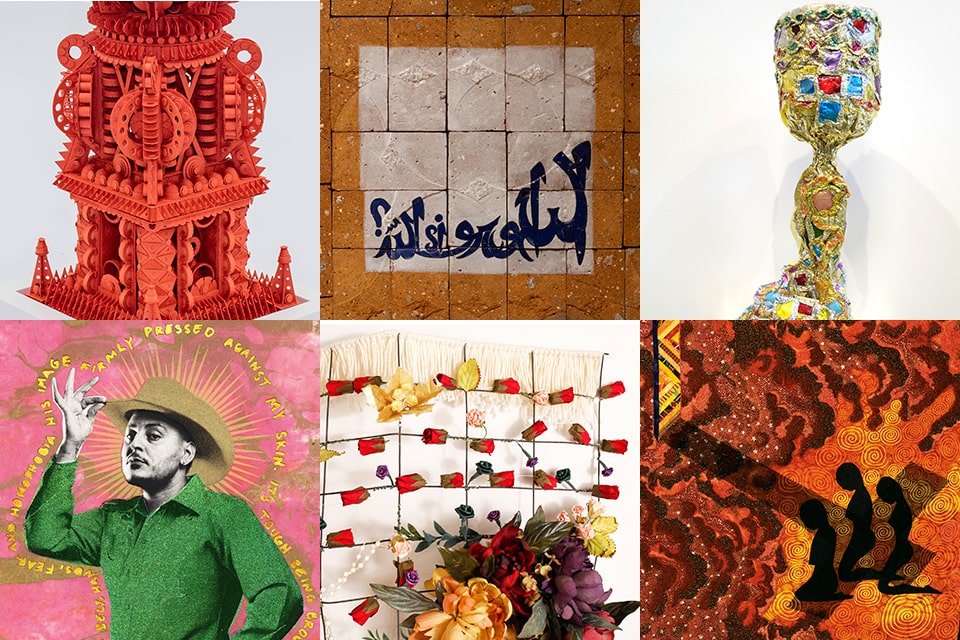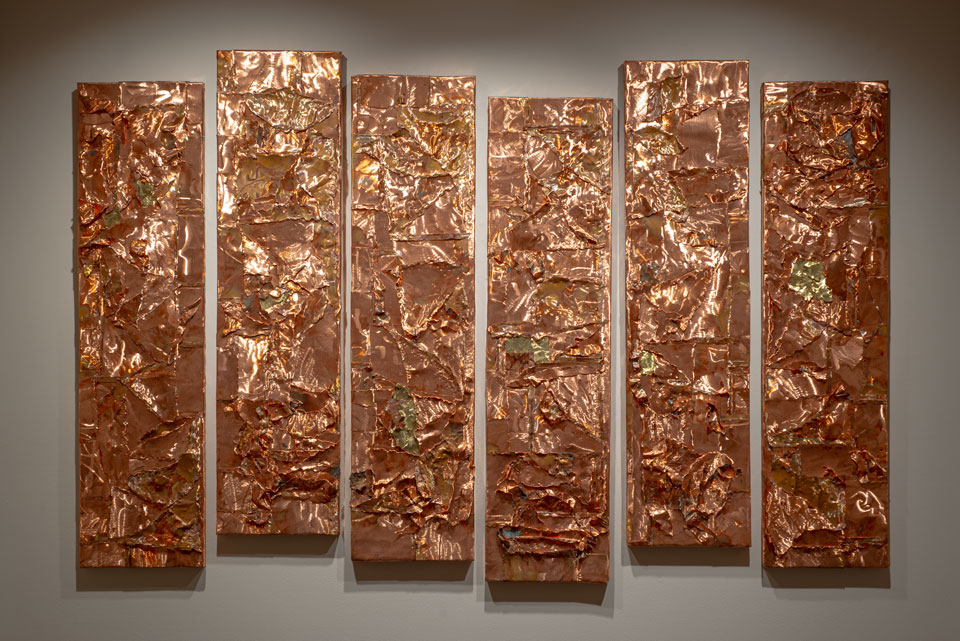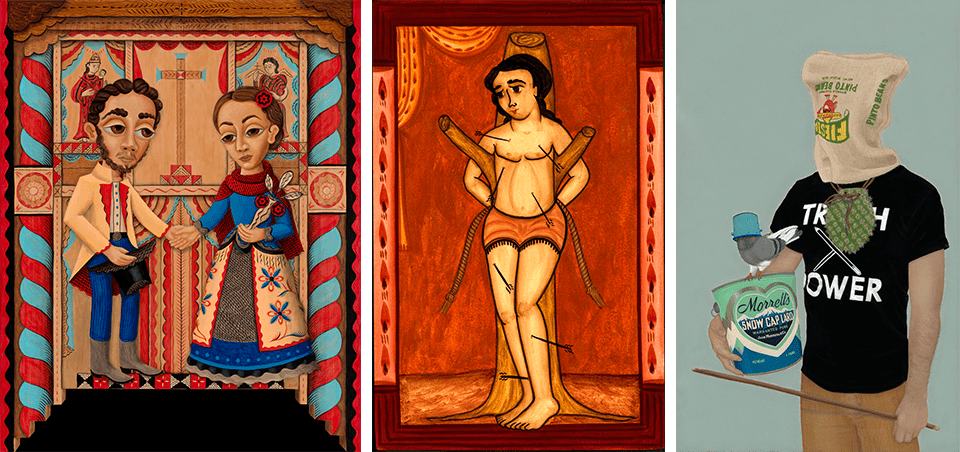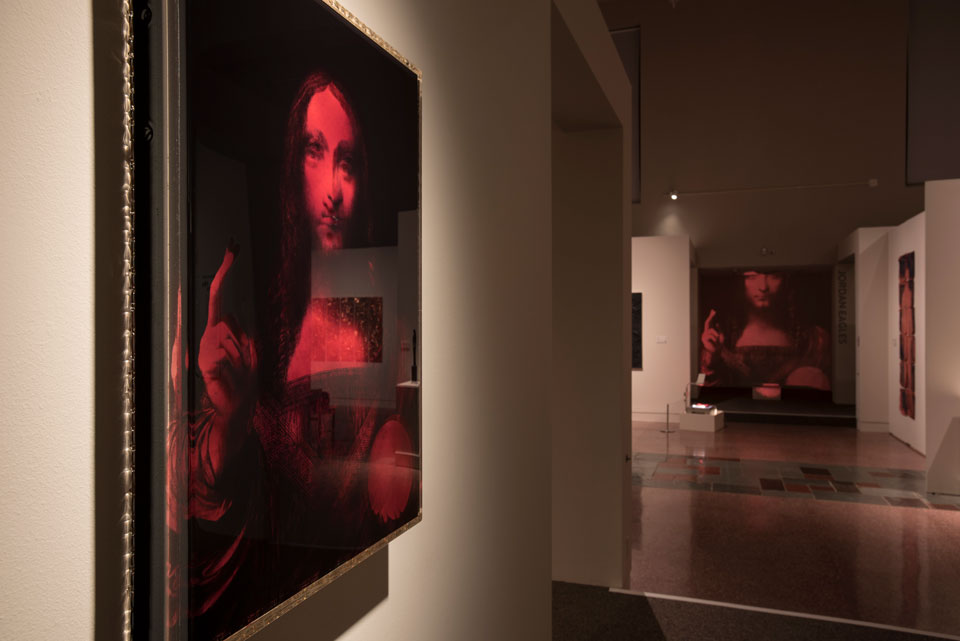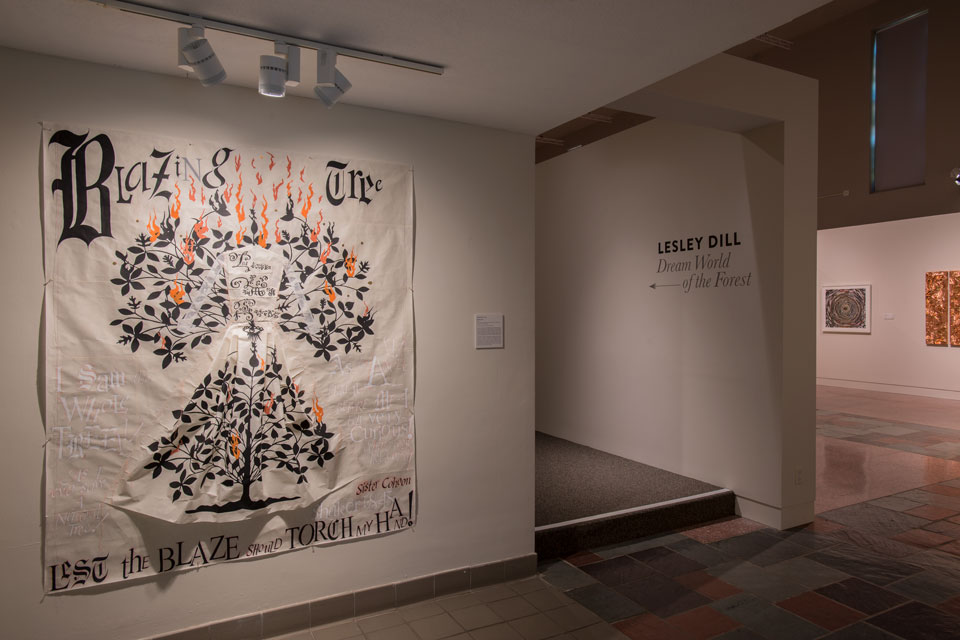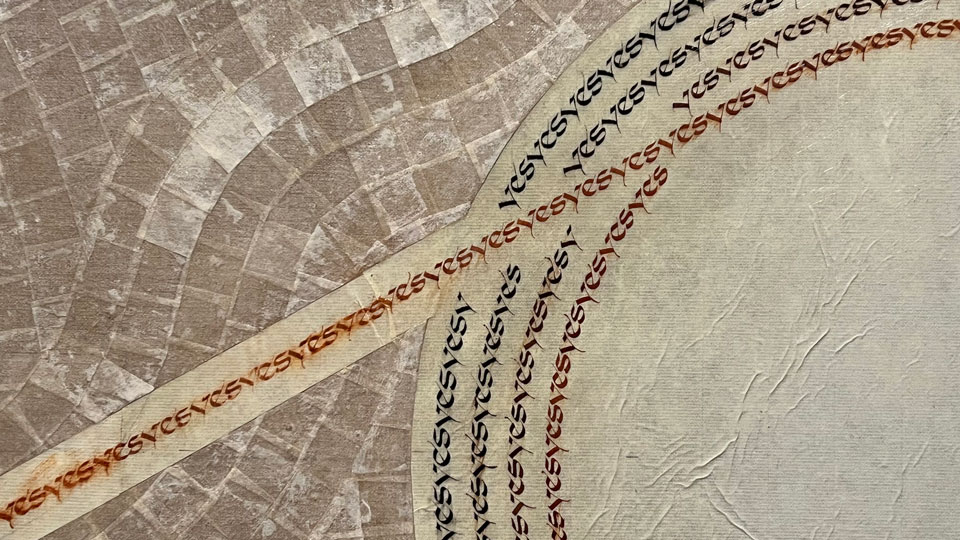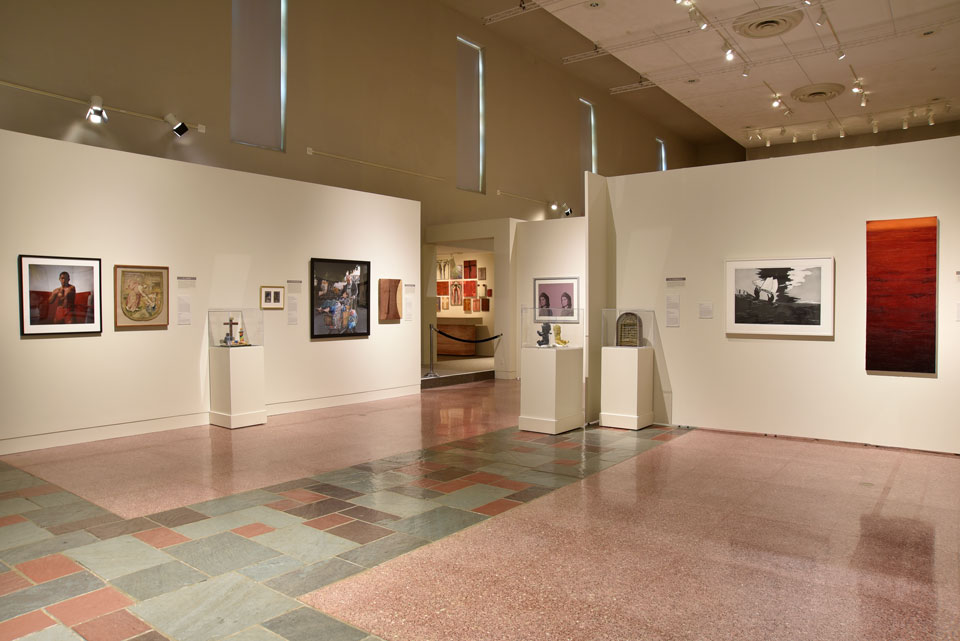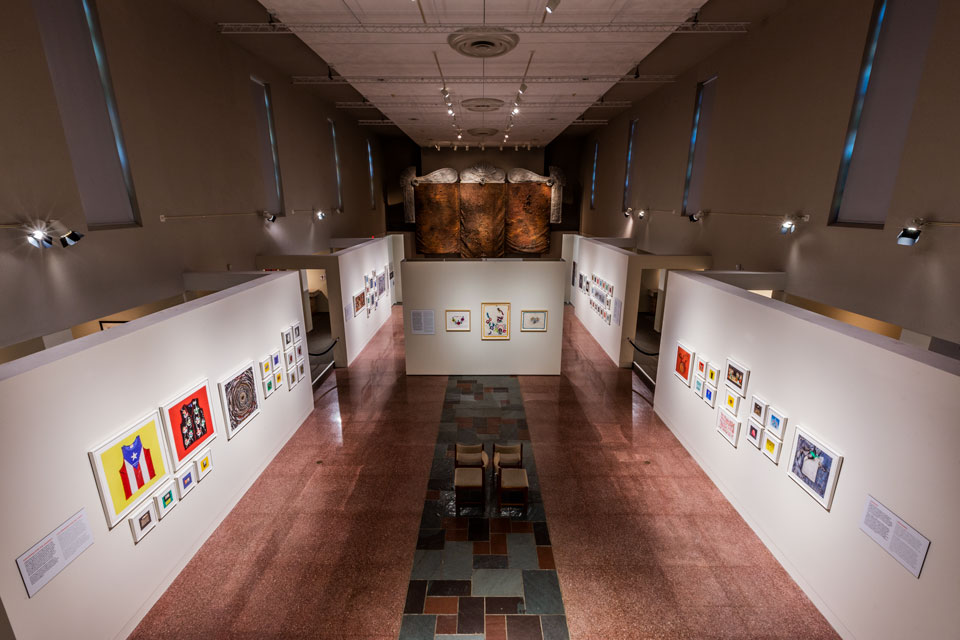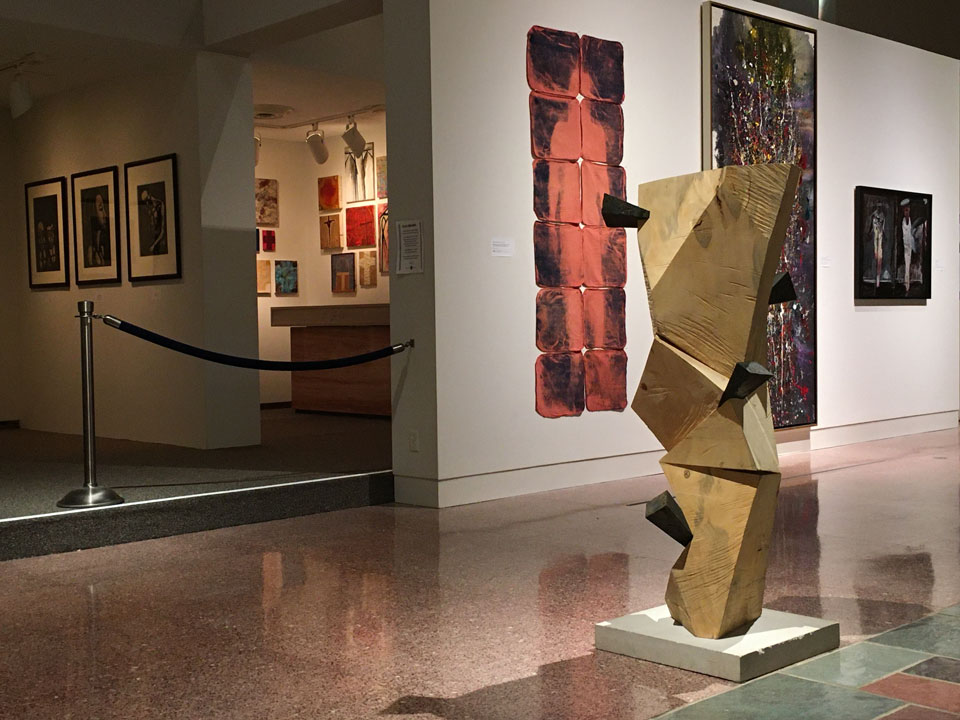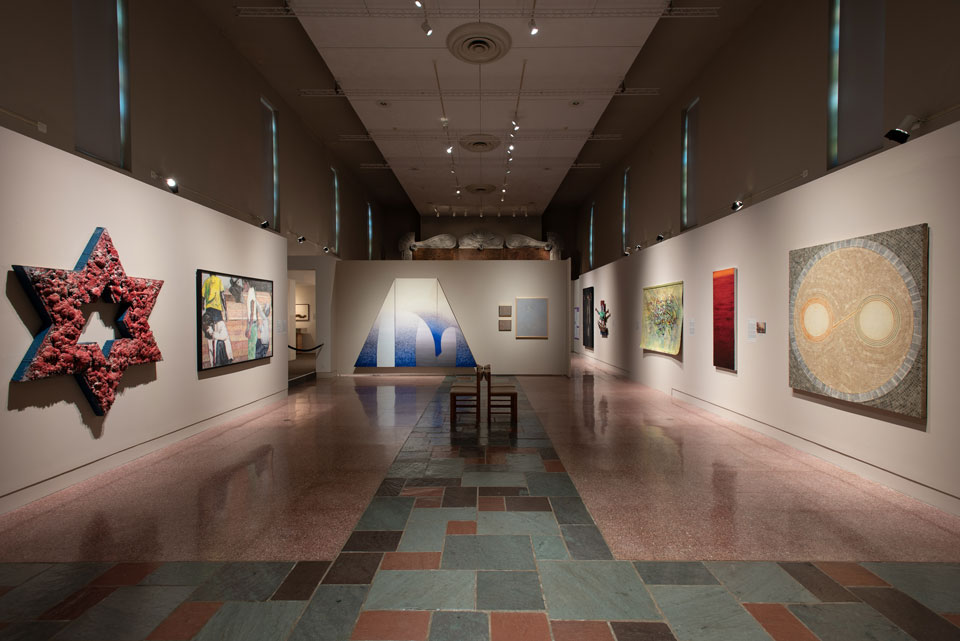Past Exhibitions
Browse the chronological list of past exhibitions at the Saint Louis University Museum of Contemporary Art (MOCRA), or search for a specific exhibition. Click “View” for more information about an exhibition. If you need further information about an exhibition, please contact us.

Eleanor Dickinson: A Retrospective
August 26, 1995 to October 22, 1995
Throughout Eleanor Dickinson's work, the human form is seen as a reflection of the soul. Walter Hopps, former director of the Corcoran Gallery of Art, has called Dickinson "one of the country's most powerful artists committed to figure drawing." The current exhibition presents works from three of Eleanor's most successful exhibitions. All the work has been done on black velvet, one of the most vilified media in art. Originally used out of respect for the people of the Appalachians whose revival services she captured on paper, audiotape, and videotape, Eleanor discovered the velvet's jet black intensity to be a dramatically expressive component in the compositions.
Read Eleanor Dickinson's artistic relationship with black velvet.
The four works from Revival! were done in the late 1970s and early 1980s and movingly reflect Eleanor's interest in capturing the intensity and prayerful spirit of the Southern Revival. The four works from Mark of the Beast were done in the mid-1980s and place human suffering within the context of the belief in the Apocalyptic conflict between good and evil.
Read Eleanor Dickinson's thoughts on working on black velvet.
The eighteen paintings from the Crucifixions series represent the artist's collaborative work with her subjects from the mid-1980s to the present. These subjects are not mere models; rather, they are people Eleanor has known and for whom the Crucifixion has significance, because they are believers or because they have experienced their own time of suffering, or both.
Inspired by the dramatic Baroque style pioneered by the 17th-century Italian painter Caravaggio, Dickinson employs extreme foreshortening and tenebrism (high contrast of light and shade, enhanced in this case by the use of black velvet as a medium), to place us at the foot of the cross of each of these people, elevating commonplace suffering to a monumental scale.
Eleanor Dickinson was born in Knoxville, Tennessee, in 1931. For the past four decades she has lived in San Francisco; since 1971 she has been on the faculty of the California College of Arts and Crafts in Oakland. She has had twenty-four solo exhibitions nationwide at such institutions as the Corcoran Gallery in Washington, D.C., Houston's Menil Collection, the Oakland Museum, the San Francisco Museum of Modern Art, San Francisco's De Young Museum, the J.B. Speed Museum in Louisville, and the Tennessee State Museum. In 1994, Dickinson was honored by the National Women's Caucus for Art (the major organization of women artists, curators, and art historians) with the President's Award for her contributions to the women's movement and to the arts.
As a Southern Baptist, I was raised to believe that every person carried their own cross through life. I came to recognize that the bodily posture of crucifixion with arms outstretched was also the posture of praise and worship . . . This series of crucifixions is a collaboration between the subjects and the artist showing this mixture of pain and praise. | Eleanor Dickinson
above:
Installation view of Eleanor Dickinson: A Retrospective at MOCRA, 1995. Photo by Jeffrey Vaughn.
